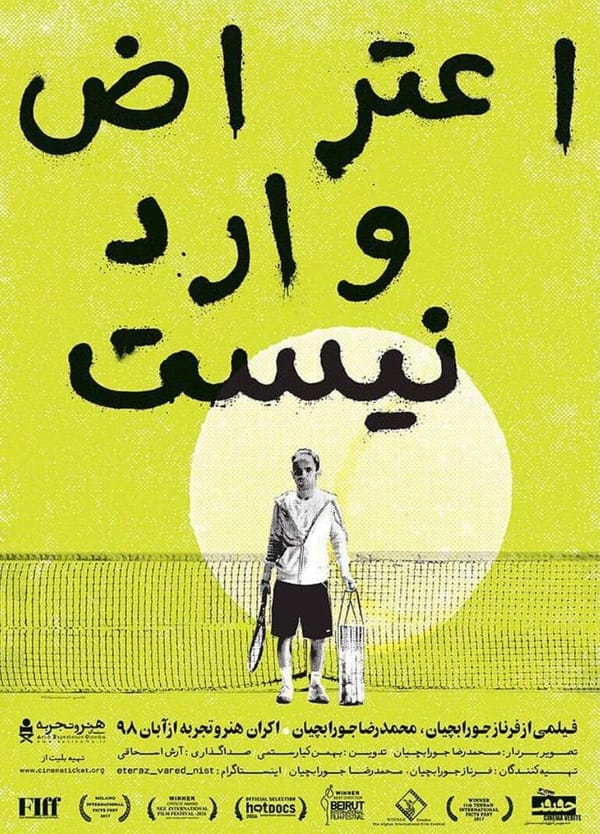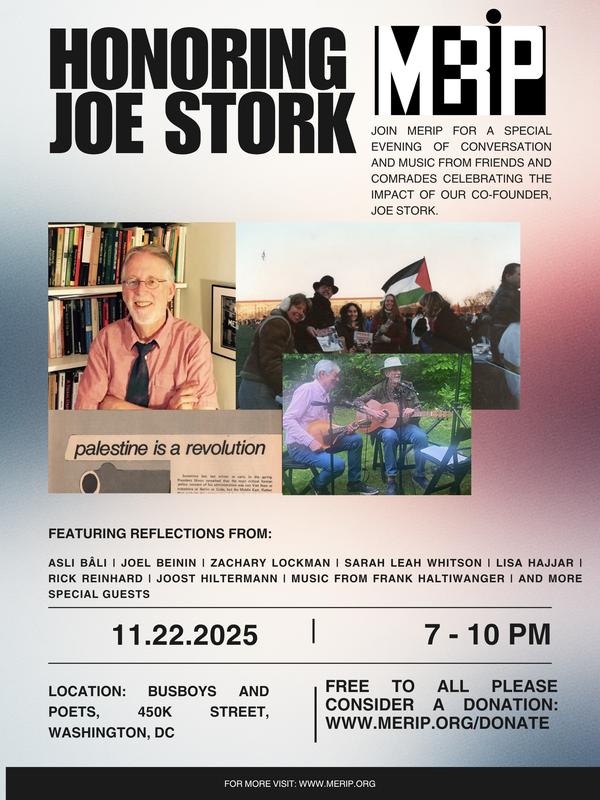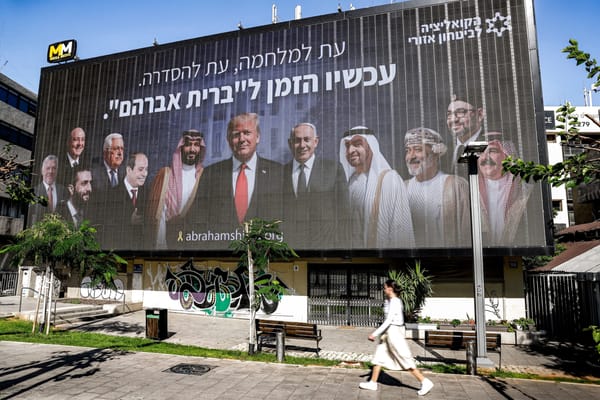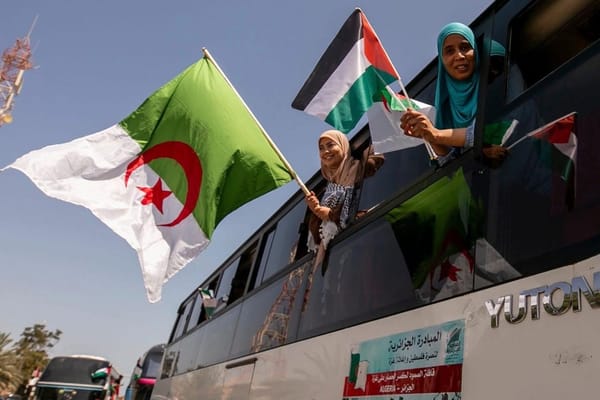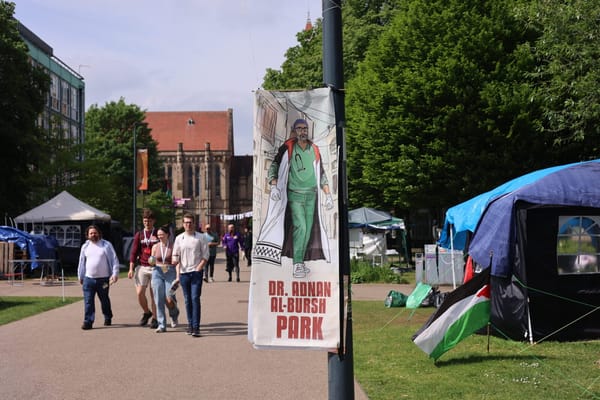Women and Politics in Post-Jina Iran
The past and present of Woman, Life, Freedom. Featuring an update from Iranian civil society on Israel’s expanding war.


The past and present of Woman, Life, Freedom. Featuring an update from Iranian civil society on Israel’s expanding war.


Nearly a year after the eruption of the Woman, Life, Freedom protests across Iran in September 2022, Sedigheh Vasmaghi, a renowned theologian, former politician and poet, publicly removed her hijab in a self-published video.The act was a forceful symbol of her support for the movement and condemnation of the Iranian regime. “We cannot remain silent against the killing of women and girls like Mahsa (Jina Amini) or Armita (Geravand) who were killed merely because of their hijab,” she says.
Other prominent women, including celebrities, had removed their hijabs in public acts of defiance against Iran’s mandatory hijab laws during the protests. But Vasmaghi’s unveiling held particular significance. Until then, her public persona was that of a deeply pious scholar who consistently observed the hijab in a strict sense without showing any hair—even while lecturing in Europe on her expertise in Islamic fiqh (jurisprudence). What Vasmaghi clearly opposed was not veiling itself but its compulsory nature: Just months before her public unveiling, she had drafted an open letter to the Supreme Leader challenging the Islamic justification for forcing women to cover their hair. In it, she asked pointedly: “How can the Islamic Republic justify such strict enforcement of mandatory veiling when even the Quran does not explicitly require women to cover their hair?”[1]
Vasmaghi’s outspokenness and expression of solidarity ultimately resulted in her imprisonment in early 2024. After public outcry and amid her rapidly deteriorating health, the Iranian authorities released her. But she has remained outspoken. In April 2025 she published an open-access book titled Why I Rebelled Against the Hijab that outlined her intellectual evolution on the question of hijab, drawing from her seminary studies, academic research and life experiences from coming of age during the 1979 revolution to today. In publicizing the book, Vasmaghi stated, “I wrote this book so that future generations and children will cherish the achievements born of our suffering and will be able to confront discrimination and injustice with clear understanding.”[2]
Given her deep religious knowledge, personal piety and experience as a former reformist politician, Vasmaghi’s protests carried particular weight in exposing the regime's politicization of the veil and its use as a tool to oppress and control women. Her direct confrontations with the authorities reflect a deeper loss of faith in the possibility of reform through formal state institutions, including its clerical justifications. Her emphasis on the future, meanwhile, highlights the need for radical change that has been long demanded and imagined by women of Iran and was made unequivocally clear within the Woman, Life, Freedom movement.
In the lead-up to the September 2022 protests, Iran faced mounting political and economic crises that disproportionately affected the country’s youth—the result of crippling international sanctions, inflation and the state’s inability to address them.
In 2020, at least 25 percent of men ages 15–24 and 42 percent of women were unemployed, despite their high levels of education. Inflation soared to 42.4 percent by 2022, reflecting the continued decline in the country’s GDP following President Trump’s reimposition of US sanctions in 2018. These economic pressures fueled the devaluation of the Iranian rial, deepening market instability and corruption in both public and private sectors. Corruption has been a feature of Iran’s political economy that favors regime loyalists and is marked by mismanagement, cronyism and nepotism, while the state neglects critical structural reforms. Tragic instances of such mismanagement include the 2017 collapse of Tehran’s Plasco Building, an aging 17-story commercial center, after a prolonged fire, killing 21 people and injuring hundreds. Both municipal authorities and building owners had repeatedly ignored all warnings about the building’s deteriorating conditions. The collapse destroyed 560 garment workshops, displacing nearly 3,000 workers.
These overlapping crises have decreased public confidence in the state’s capacity for reform and pushed many, especially the youth, to imagine and actively pursue alternative futures beyond the confines of the current theocratic system. As such, youth were at the forefront of mass protests in 2017 and 2019.
Her death highlighted the intersecting forms of oppression embedded within Iran’s political, economic and social structures and galvanized a diverse cross section of dissatisfied groups around a shared demand for radical democratic transformation.
This growing desire for change came into sharp focus during the Woman, Life, Freedom protests, which exposed deep-rooted tensions, widespread anger and mounting disillusionment among large segments of the population. The public outcry over the state-sanctioned killing of Jina (Mahsa) Amini marked a watershed moment. Jina was a young Kurdish woman from a historically marginalized ethnic and religious minority. Her death highlighted the intersecting forms of oppression embedded within Iran’s political, economic and social structures and galvanized a diverse cross section of dissatisfied groups around a shared demand for radical democratic transformation.
The moment unified disparate voices across gender, ethnic, class, religious and other identities. Urban sociologist Azam Khatam estimates that at least two million people across 160 cities in Iran took part in the protests, most of them young individuals born in the 2000s.[3] Khatam also notes that, due to heavy security surveillance on main streets in major cities, protest leaders called for demonstrations in local neighborhoods. This strategy allowed young protesters greater maneuverability in case of threats, but it also limited the visibility of the movement’s broad support. The centrality of the issue of women’s bodily autonomy following the state’s strict dress code enforcement meant that women, especially young women, acted as key agents within the uprisings.
Despite harsh state backlash, post-Jina Iran (as it is widely referred to by feminist forces inside the country), has witnessed a new level of collective consciousness. This shift in awareness is rooted in anti-authoritarian values and a rejection of all forms of control and domination, including singular religious authority—as exemplified by Vasmaghi’s faith-based critiques. While it may be gradual and uneven, it has transformative potential.
Everyday acts of resistance against state restrictions, which preceded the protests, are becoming more widespread, prompting new individuals to reevaluate their relationship to the state and reconsider personal choices, including how they dress.
It now extends beyond traditional activist circles—such as feminists, labor unions and student groups—to include broader segments of society. Everyday acts of resistance against state restrictions, which preceded the protests, are becoming more widespread, prompting new individuals to reevaluate their relationship to the state and reconsider personal choices, including how they dress. A growing body of reports, podcasts and analyses by independent journalists and civil society actors is documenting these transformations.
One such platform is Zanan-e Emrooz (Today’s Women), a Persian-language monthly magazine that, despite ongoing state pressure, has been publishing on critical issues affecting women for the past decades. Offering in-depth reporting and analysis of local, regional and global sociopolitical developments through a gendered lens, the magazine has become a vital voice in Iran’s feminist landscape. It is edited by Shahla Sherkat, who has spent decades advancing feminist discourse within the constraints of the theocratic state. Zanan-e Emrooz recently published a special open-access issue for International Women’s Day (March 8, 2025), spotlighting key societal developments and transformations in the post-Jina era.
In one article featuring interviews with young women on hijab observance and street harassment, 23-year-old Neda—a resident of Qom, one of Iran’s most religious and conservative cities—described her personal transformation, or internal “revolution,” in the wake of the protests. “I always believed in the hijab, but when the Jina (protests) began, I recognized I am full of anger. Angry of the constant policing over my dress whether by family, university, or the society at large. Suddenly a revolution occurred within me, driving me to resist oppression. I changed the form of my hijab, symbolizing a big No!”[4]
Neda went on to describe the broader transformations that were taking place in society as a result of the space opened up by the protests and the discussions they engendered. “Sedigheh Vasmaghi’s removal of her veil and stating that this practice has no basis in religion, instigated an important debate in Qom,” she noted. A new Hijab and Chastity Law introduced in the wake of the protests fueled even more discussion. “When the regime doubled down by adopting the Hijab and Chastity Law, many of my seminary friends also shared that there is no explicit text (in Islam) about compulsory hijab,” Neda said. “These debates among the public and religious scholars gave me the courage to resist and took away my shame to dress according to a certain expectation in the holy city of Qom.”
Neda is not alone. Millions of Iranian women, especially young women in their teens and twenties are defying the hijab laws in unprecedented numbers despite risks to their freedom or lives, as apparent from viral images of unveiled women in public settings spread on social media, independent media coverage and personal accounts. Such defiance is occurring as spontaneous acts of everyday resistance by ordinary individuals, rather than activists, who are embodying their aspirations despite state threats.
The Hijab and Chastity Law Neda referred to as an inciting moment among her friends was passed by the Iranian parliament in November 2024. It authorizes the government to impose heightened penalties on women and businesses who failed to comply with the hijab mandates. The law’s penalties range from heavy fines to up to 10 years in prison for repeated violations by women with so-called bad hijab. The law also authorizes use of surveillance and artificial intelligence to identify and punish those who defy the hijab laws, including while in personal vehicles.
Widespread condemnation of the law—from domestic voices like Vasmaghi to international bodies such as the United Nations—prompted the recently elected president Masoud Pezeshkian to halt its enforcement, warning that implementing it could further alienate an already discontented population. Pezeshkian’s campaign of moderation and a general critique of Iran’s hardliners, including violent enforcement of mandatory veiling, helped him get elected in 2024 over his more conservative counterparts. During the presidential debates, Pezeshkian openly expressed his opposition to mandatory hijab patrols, the same forces that violently arrested Mahsa Jina Amini and contributed to her tragic death in 2022.
While Pezeshkian’s campaign promises resonated with many, his presidential victory came amid historically low voter turnout. Women were among the most disillusioned, with key figures in the Iranian feminist movement calling for a boycott of the elections.
The recent electoral boycotts, like the notable increase in civil disobedience against mandatory hijab, emerged after decades of women’s formal political engagement and attempts at reform from within state institutions.
From the late 1990s through the mid-2010s in particular, women across Iran’s ideological spectrum, from secular feminists to religious women, successfully built coalitions that evolved into a robust women’s rights movement. The main approach of this movement was to make explicit demands from the state.
The One Million Signature Campaign, launched in 2006, was one prominent initiative. It aimed at reform of gender discriminatory family laws through public awareness-raising and pressuring key state institutions, particularly the parliament. Although the campaign ultimately fell short of reforming Iran’s gender-discriminatory family laws, its impact was evident in the powerful networks and coalitions it fostered among diverse women’s rights groups, some of whom belonged to reformist parties and even served in political decision-making roles in the parliament or cabinet. The timely alliance forged between secular and religious women enabled them to successfully pressure the legislative branch to block the passage of a regressive Family Protection Act in 2008, which, among other provisions, aimed to ease restrictions on polygamy for men.
Ahead of the 2009 presidential elections, the Iranian women’s movement adopted a similar strategy by forming the Forum for Dialogue Among Women (Ham-andishi Zanan)—a coalition of ideologically diverse women activists to draft and present a list of demands to the presidential candidates under a Charter for Women’s Rights. Their demands included women’s greater access to positions of political authority, a gender egalitarian family law and enhanced access to educational and employment opportunities. While the disputed reelection of Conservative president Mahmoud Ahmadinejad in these elections was ultimately accompanied by a harsh crackdown on the women’s movement and its leaders, the subsequent Green Movement protests nonetheless reflected hope for reform within the framework of the Islamic Republic. The central slogan, “Where is my vote?” questioned the integrity of the election process rather than directly challenging the theocratic system or authority of the Supreme Leader.
Building on earlier campaign strategies, key members of the Iranian women’s rights movement, including pioneers of the One Million Signatures campaign, considered the 2016 parliamentary elections yet another opportunity to address their concerns in parliament. They launched the “Change the Male-Dominated Image of Parliament” campaign. The campaign leveraged both virtual and in-person platforms to train and support women pursuing office on a women’s rights agenda, while also collaborating with reformist parties to ensure that women made up at least 30 percent of reformist-backed candidates in multi-member districts across Iran.[5]
The campaign contributed to the election of several women parliamentarians in 2016 with links to the women’s movement. Key legislative gains followed, including Iranian mothers gaining the right to pass citizenship to their children under certain conditions. But even these victories proved short-lived. The competing conservative groups, including the hardliner Islamic Revolutionary Guard Corps, harassed and attacked leaders of the Iranian women’s rights movement, including reformist women in office like Shahindokht Molaverdi, who served as vice president for Women and Family Affairs from 2013 until her forced removal in 2017. Conservatives also delayed the implementation of women-friendly laws that the 2016 parliament had championed, including the women’s citizenship law, which has yet to be fully implemented.
The state’s crackdown on Iran’s women’s movement and its leaders gradually transformed the nature of women’s organizing and feminist advocacy. The hostile political environment for mass organizing resulted in increasingly sporadic, unorganized and leaderless forms of claim making and resistance on behalf of women. Central to this type of protests were public acts of unveiling. Routinely broadcasted on online spaces, they were aimed at highlighting women’s disapproval of mandatory hijab laws for both local and global audiences.
Over the past decade, women’s organizing has continued to range from prominent activists to ordinary women mobilizing around shared demands in ways that are often interwoven and mutually reinforcing..
One of the most iconic examples was the 2017 public unveiling of Vida Movahed on Tehran’s Revolution Street—an act that inspired a wave of similar actions and gave rise to the “Girls of Revolution Street” protests. These spontaneous displays of defiance, often initiated by ordinary women rather than organized activists, underscored a growing grassroots force that rejected state-imposed dress codes. Over the past decade, women’s organizing has continued to range from prominent activists to ordinary women mobilizing around shared demands in ways that are often interwoven and mutually reinforcing, with varying levels of communication or collaboration between them.[6]
The final straw for the women’s movement came in 2020 when the conservative-backed Guardian Council—an unelected body that vets candidates for elections—disqualified all outspoken female parliamentarians from running for reelection. With the closure of this limited path of change, prominent feminists like Narges Mohammadi urged the public to boycott the election. She emphasized that people’s support for the so-called reformist and moderate governments had only furthered “crises and repression.”[7] Thanks to these efforts, led prominently by women, voter turnout dropped to just 42 percent—down from 61 percent in the previous election in 2016.
Women’s calls for boycott have been growing with every election in Iran since 2020. Public statements from leading women’s rights advocates released ahead of each election reflect a deepening loss of faith in the institution’s ability to deliver meaningful egalitarian change. Notably, even renowned reformist party women, including some of those who served in the parliament, are among those advocating boycotts. Iran’s Green Movement leaders, the married couple Mir-Hossein Mousavi and Zahra Rahnavard—under house arrest since 2011—have also called for boycott of the elections. Mousavi has gone further, calling for a new constitution to be drafted by “the real representatives of the nation” and rooted in the principles of the Woman, Life, Freedom movement to bring about fundamental change in Iran.[8]
Since the 2022 uprisings, large sections of the Iranian population, particularly women and youth, have continued their calls for radical change. Rather than waiting for reform, elections or even a revolution, protesting Iranians are organizing around their desired ideals and freedoms, sidelining the current structures of the state.
Notably, many protesters saw the Woman, Life, Freedom movement as a chance to reimagine their political condition, expressing their demands through charters and bills of rights as a starting point. In February 2023, 20 civil society groups across Iran—including labor unions, student organizations and women’s and human rights groups—collectively publicized a joint charter outlining their minimum demands for a “new, modern, and humane society.”[9] The 12-point list of demands were drastically different from anything proposed by the state, including its reformist politicians, signaling a radical shift from the status quo. In an unprecedented move, for instance, these independent civil society groups endorsed “the immediate and unquestionable removal of all forms of the discriminatory structure against sexual minorities and people with gender-nonconforming identities.”[10]
In March 2023, in an effort to translate the progressive slogan “Woman, Life, Freedom” into practice, a group of feminist advocates—primarily based in the diaspora and including members of the core team behind the 2009 Charter for Women’s Rights—published the first draft of the Iran Women’s Bill of Rights. Framed as a living document, it is, is in effect, a “wish-list” (list-e arezuha)—a term adopted by women to popularize their demands to the general public and one that continues to be used. It outlines key gender-egalitarian demands for inclusion in a future Iranian constitution. They include legal equality and non-discrimination in a secular state, as well as the establishment of institutional mechanisms, such as national-level women’s commissions and policy agencies, to ensure effective implementation.
The discussions and debates that feminists of Iran are leading largely in informal settings are important practices for democratic politics that most Iranians were denied for decades.
Although seemingly far-fetched for the current context, articulating these future aspirations and wish lists fosters an imaginative politics that can be transformative. The discussions and debates that feminists of Iran are leading largely in informal settings are important practices for democratic politics that most Iranians were denied for decades. Many Iranians are taking matters into their own hands, forming structures and forums that diverge significantly from the regime’s status quo. Civil society groups—such as labor unions, academic associations and teachers’ organizations—have become increasingly attentive to gender representation, actively promoting diversity within their membership and leadership. In the absence of open physical spaces, online platforms like Clubhouse have been hosting webinars and discussions that foster democratic engagement. These spaces enable intentional inclusion of historically marginalized populations, facilitating dialogues around various cross-cutting political and social problems.
In this context, the broad spectrum of civil disobedience—from women’s public unveiling to the drafting of charters and statements of solidarity in the post-Jina era—reflects a significant shift in public consciousness and a growing commitment to radical democratic change, despite an unyielding state. Many protesters hope that these cumulative acts of resistance will continue to gain momentum, ultimately paving the way for transformative change.
Author's note: This piece was completed on June 10, 2025. On June 13, amid an ongoing genocidal war in Gaza, Israel initiated a major attack on Iran's military infrastructure and civilian sites in its capital of Tehran and various other parts of the country. Iran responded with drone and missile attacks, indefinitely suspending any nuclear negotiations. As of this writing, an unprecedented war is unfolding between the two countries, resulting in the killing and injuring of mostly civilians, many of whom are women and children.
Many Iranian women’s rights advocates and civil society groups had long feared such an escalation and its potential negative consequences—particularly for the grassroots-driven demands for radical change discussed in this MERIP article. Within hours of the onset of the war, Iranian Feminist and Equality Activists issued a statement in Persian titled, “No to War, No to the Islamic Republic,” publicly condemning all violence and conflict, and “calling on all Iranians to recommit to the principles of Woman, Life, Freedom.” On June 16, the Iran Writers Association similarly issued a statement, condemning “Israel, which has been killing the people of Gaza for months and forcing the survivors to die of famine and starvation,” and “has now extended its war-mongering and aggression to the people of Iran.” The statement warns that the achievements of the post-Jina movement risk being erased in the wake of this aggression and that, in its aftermath, extreme nationalism, radicalism and neo-fascism could take root. As they write, “The world’s silence in the face of this aggression, under the pretext of the recklessness and tyranny of the Iranian regime, will only magnify the dimensions of the disaster.” Iran’s civil society groups are not silent in their condemnation of war-mongering forces and call for the amplification of the country’s freedom-seeking movements, recognizing that real democratic change must come from within.
Read the previous article.
Read the next article.
This article appears in MER issue 314 “New Gender Frontlines.”
[Mona Tajali is a visiting scholar at Stanford University's Center for Democracy, Development and the Rule of Law.]
[1] Committee on Academic Freedom, “Letter protesting the arrest of Prof. Sedigheh Vasmaghi in Iran,” Middle East Studies Association April 11, 2024.
[2] Sedigheh Vasmaghi, Why I Rebelled Against the Hijab (Santa Monica, California: Aasoo Books, 2025), foreword. [In Persian]
[3] Azam Khatam, “Mahsa Amini’s Killing, state violence, and moral policing in Iran,” Human Geography 1/8 (2023).
[4] Ferdos Sheikholislam, “Pull-back and stay there: Street Harassment after Jina,” Zanan Emrooz (March 2025): pp. 50–67. [In Persian]
[5] Mona Tajali, Women’s Political Representation in Iran and Turkey: Demanding a Seat at the Table (Edinburgh University Press, 2022), pp. 265-66.
[6] Maryam Foumani, “The New Map of the Women’s Movement in Iran,” Iran Academia: New Dynamics in Iranian Women’s Activism Panel, February 23, 2024. [In Persian]
[7] “Narges Mohammadi demands boycott of the elections,” RadioFarda, 4 February 2020. [In Persian]
[8] Mardo Soghom, “Opposition Figure in Iran Calls For Fundamental Change, New Constitution,” IranInternational February 4, 2023.
[9] “Trade Unions Issue Charter of Minimum Demands,” IranWire February 16, 2023.
[10] Ibid.


